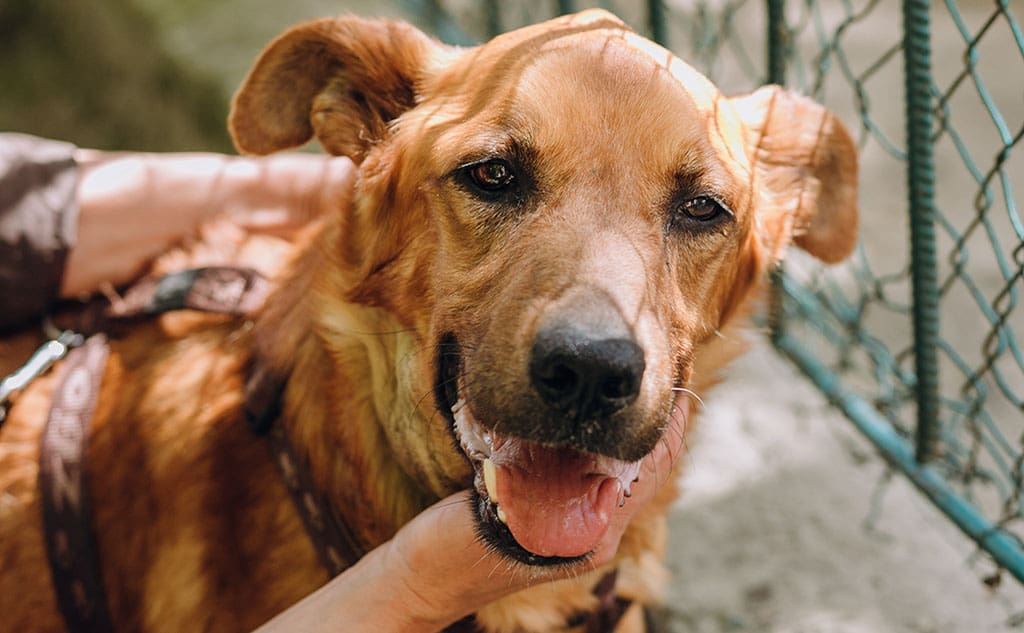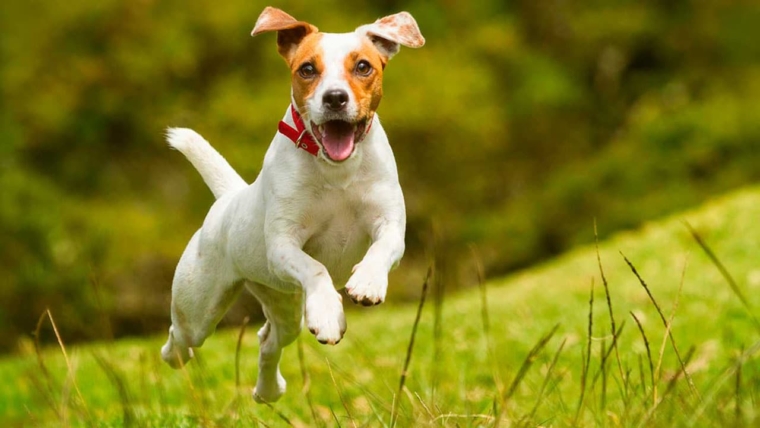
It’s a natural process for our dogs to age. But there are some ways to support your beloved four-legged pet in everyday life and slow down the aging process. They make life more enjoyable and easier for our furry muzzles and improve their quality of life.
I’ll introduce you to some of them here. While comfort is always individual, I’m sure your four-legged friend will appreciate many of the ideas as needed. And there are no limits to your creativity. Just take a closer look at your four-legged friend.
Extra tip: You can also apply some of these tips if your dog is still relatively young and for joint problems.
Avoid being overweight – it significantly reduces life expectancy!
Let’s start with what is vital to your dog and has a big impact on his life. Proper body weight has a big positive impact on your dog’s health and aging. The more optimal your dog’s weight is, the easier and more enjoyable he will be able to move. Being overweight poses a serious health risk. The life expectancy of an overweight dog is drastically reduced, at worst by 20%! So, you can see that being overweight is detrimental to your dog throughout his life.
If your dog is overweight, he gets caught in a vicious cycle. The joy of movement is diminished because every step is difficult. His entire musculoskeletal system is overloaded, and his joints are permanently damaged. The efficiency of the cardiovascular system also decreases. Movement becomes a drag. And the less movement, the less energy expenditure. This leads to further weight gain. In addition, the risk of diseases such as diabetes, heart disease and tumors increases.
Movement appropriate for older dogs – “a rock grows moss in one place”
Even in old age, your dog needs movement. It has to be structured differently. Lack of movement leads to loss of flexibility and accelerated aging. You can also see this in people: older people who have been on the move all their lives and who try to move regularly stay in shape longer, stay flexible and get sick less often. Movement has a positive effect on the onset and progression of diseases such as osteoarthritis and spondylosis. In addition, you help your dog avoid muscle degeneration and limited mobility. The cardiovascular system also needs exercise. The only exception is if your dog is prescribed complete rest. However, it is normal for an aging body to tire more quickly and take longer to recover. Cardiovascular and musculoskeletal performance decreases. Joints may suffer from some type of osteoarthritis, muscles become weaker. If we now insist that the pet maintain the same amount of movement as a mature dog, we will be giving him too much stress. His joints will be overloaded and begin to ache. His muscles will be overstretched. His heart will have to deliver more energy than it is able to. Your dog will be exhausted and depleted.
How to organize motor activity of an elderly dog without overloading it
Your dog’s exercise routine should take his age and health into account. You shouldn’t forget about variety.
I recommend that you take him for a few short walks instead of, for example, two long walks. Constant movement will be good for your dog, and the recovery phases after a walk will be noticeably shorter. In short, your dog will be less tired and can better distribute his energy. This will have a positive effect on his longevity.
Extra tip: During walks in the fall and winter, it will be very good for your older dog to be protected by a doggie jacket.
Regular “gymnastics” is a small addition to motor activity with excellent effects
With regular, goal-oriented movement exercises, you can keep your older dog in shape and slow down the aging process considerably. These can be simple daily exercises such as pawing, standing and sitting, or moving to the “place” position from the “standing” position that are regularly performed by the dog. They train mobility and musculature. In addition, coordination, balance and body feeling remain stable because of this. And regular training also means brain work.
When it becomes more difficult to perform movements and support is required:
It is quite common that in everyday life, movements that used to be quite normal become difficult to perform, and in doing so, the dog becomes insecure. In recent years, various aids have been developed for this, which I would like to recommend to you.
Safety aids for climbing stairs
Many dogs have difficulty climbing stairs in their old age. Some pets can easily climb stairs. But starting at a certain pet size, it becomes a challenge. For this reason, aids have been developed to help your dog when climbing stairs. There are aids to support the front or back legs only. There are also ones that support your dog’s entire torso. You can easily use these as well if your dog has difficulty getting up or if he needs a little help and support when walking.
When choosing aids, make sure they fit well and are made of strong, tear-resistant material. Also, the material should be soft and not cut into the body anywhere. Neoprene, which is also easy to clean and quick to dry, is often used.
Dog ramps for the car to avoid falls and injuries
If your dog is standing in front of the open trunk and hesitating to step from one paw to the other instead of quickly jumping into the car, it’s time to help him get in and out of the car. Of course, you can lift him into the car. However, depending on the size of the dog, both sides are more comfortable using a ramp. Always make sure the ramp is wide enough for your dog, not too steep and not too slippery. Also, I recommend that you always stay close to her when using the ramp. This way, you can back up your dog if he loses his balance. By using a dog ramp, your older dog will be able to get in and out of the car safely.
Paw and claw protection – for better grip in the house and on walks
Many people still make fun of dog shoes. However, it has nothing to do with fashion accessories. For some four-legged friends, they are a necessity. For example, when dogs can no longer stand on slippery floors. Such shoes prevent slips and thus falls. It also protects the paws and claws in dogs that “slip” with their paws when sliding. I recommend that you always make sure that the shoes fit well. They shouldn’t be too tight, but they shouldn’t slip either. There are shoes that can be used in the house. There are also special outdoor shoes made of other materials. Their soles have a different profile.
Bandage
Bandages give your dog stability. They support and relieve stress on the joints. Ligaments and tendons become weaker in old age. Many dogs are prone to weakened ligaments, for example. So it’s a big help when you use bandages to support and guide the joints. I recommend that you get an individual consultation with a physical therapist or orthopedist.
A place for drinking and feeding on a hill
An elevated drinking and feeding area is a good aid in old age, especially for large dogs. Your dog doesn’t have to lean forward. The load on the joints is distributed evenly. The dog can eat in a comfortable position.
Good nutrition and healthy sleep
Make sure that your dog eats food that is balanced, healthy and as good for him as possible. Good nutrition not only affects how your dog feels in the here and now, but also has a long-term effect on his health and aging process. In addition, there are many different nutritional supplements that can help your dog as he ages. In addition to proper nutrition, good sleep is important. Dogs sleep 17 to 20 hours a day, and even a little more at an older age. So make sure you have a good place to lie down so that your dog actually rests when he sleeps, and his joints and back lie freely and take the strain off of them.
As a result, you will make life easier for your elderly dog
You can see that there are many simple things you can easily put into practice every day to make life easier for your dog as he ages. Some of them also have a positive effect on the aging process of your dog. It is important to keep your beloved pet on the move even in old age (with the support of aids) and not to be sidetracked.


